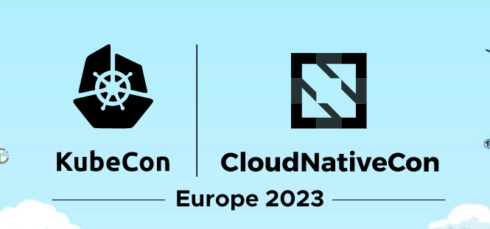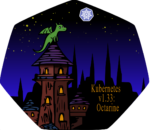
KubeCon Europe kicked off today in Amsterdam, and a number of companies have already shared their latest innovations at the event.
Here are a few highlights so far:
Sumo Logic announces Predict for Metrics
Predictr for Metrics uses observability data to predict variable applications, cloud and infrastructure usage, and resource demands.
The company believes the new tool will help reduce resource bottlenecks, which are a common cause of application outages.
“To keep pace with the speed of modern application development, it is important that operations leaders are able to predict their app and cloud usage needs to keep operations running smoothly and avoid unplanned downtime,” said Erez Barak, VP of Product Development for Observability, Sumo Logic.
Cosmonic adds new integration options
Users can now utilize Cosmonic Connect to integrate third-party tools with WebAssembly. At the event the company announced Cosmonic Connect Kubernetes as the first integration that is available.
According to Cosmonic, this new feature will help alleviate some of the current limits that Kubernetes has, especially at the edge. Cosmonic Connect Kubernetes can connect large Kubernetes environments to WebAssembly.
In addition, the company announced that the Cosmonic Platform has reached open beta.
Solo.io previews Gloo Fabric
Gloo Fabric is a cloud-native networking solution for VM-based, container-based, and serverless applications.
It offers integration with Gloo Platform, a unified control plane, multi-cluster and multi-cloud management, centralized networking and policy management, multi-tenant isolation between resources, dynamic resource discovery, integration with public cloud networking, and GitOps-based management of deployment resources.
“Gloo Fabric builds upon the many years of expertise that Solo has built in securing and networking diverse, distributed applications,” said Idit Levine, CEO and founder of Solo.io. “Migrating applications to the cloud is a top priority for all of our customers, but existing solutions have prevented them from successful migrations. Customers don’t want to be locked into a single vendor. They want a platform that lets them migrate applications that make sense for their business.”
Rafay Systems announces Backstage Plugins
This set of open-source software plugins are intended to be used with Spotify’s platform for building developer platforms, Backstage. This gives Backstage engineers full access to Rafay features and functionality.
Platform engineers can use the plugins to curate the parameters they want to expose for building workflows, leading to tighter enterprise guardrails, simpler development experience, and reduced cognitive load for developers.
“The key to increasing the speed of modernization initiatives is minimizing the manual, ticketing-based process typically required to provision and access Kubernetes clusters and namespaces,” said Mohan Atreya, SVP of products and services for Rafay Systems. “This means developers do not have to wait for a slow, multi-step ticketing process to get what they need and instead, deploy new applications or resources themselves.
Slim.AI introduces Automated Container Hardening
The new tool produces a security hardened container that is secure for production and can pass an organization’s internal tests and policies. According to Slim.AI, the containers produced are up to 30 times smaller than normal containers.
Key benefits of Automated Container Hardening include the ability to use your own tests, easy automation, the ability to work on any container image, and comprehensive reporting.
Logz.io adds security scanning to Kubernetes 360
Kubernetes 360 is an observability solution for Kubernetes. This new addition will enable observability teams to quickly identify any vulnerabilities that are present in an application or infrastructure.
The capability utilizes Aqua Trivy’s vulnerability and misconfiguration scanning solution. Trivy scans open source packages and dependencies, infrastructure as code issues and misconfigurations, and Common Vulnerabilities and Exposures (CVEs).
“Kubernetes has become the de facto operating system for applications-driven organizations, and this is driving the rapid convergence of security and observability data,” said Asaf Yigal, CTO and co-founder of Logz.io. “As a result, organizations need baked-in security monitoring and response for Kubernetes environments, and with this added content, Kubernetes 360 further provides everything teams need to monitor their environments in a single interface.”
ObservIQ announces BindPlane OP Cloud
BindPlane OP is an observability solution that offers simple management of telemetry agents at scale. It brings in telemetry data from multiple sources, a result of the company recognizing the explosive growth of telemetry data coming from multiple sources and vendors.
The tool is based on OpenTelemetry, which observIQ is a top contributor to. The cloud offering cuts down on complexity of setup to make it easier to deploy an observability pipeline.
Other versions of BindPlane OP include the open source version and BindPlane OP Enterprise, which provides support for the product and is ideal for companies with high regulatory or security requirements.
Groundcover introduces new eBPF observability agent Flora
Flora provides observability with performance in mind. It can be used to provide full observability at scale with very little overhead. According to the company, benchmark tests have shown it outperforming Datadog, OpenTelemetry, and the Pixie agent when it comes to overhead.
It uses eBPF to provide this low overhead, and also utilizes a zero-copy memory efficient pipeline to provide meaningful observability outputs.
State of Kubernetes Security Survey results
Red Hat released the results to this annual survey of 600 DevOps, engineering, and security professionals.
The company found that 38% of companies say their security investment in containers is inadequate, which is a 7% increase from last year.
67% of survey respondents said they have had to slow down their container adoption because of security concerns. More than half have experienced a supply chain security issue in their cloud-native development pipeline.
Finout launches Agentless Cost Governance Suite for Kubernetes
The new solution helps companies manage, forecast, and optimize their Kubernetes spend.
Key features of the new product include the ability to analyze an unlimited number of clusters, a unified dashboard for all bills, budgeting and forecasting, anomaly detection, and cost optimization insights and dynamic recommendations.
“Cloud usage will continue to grow for most scaling modern businesses running on Kubernetes,” said Roi Rav-Hon, CEO and co-founder of Finout. “But the days are gone when engineers have virtually unlimited spend. Everyone needs to understand why the money is being spent the way it is, eliminate the waste wherever possible, and ensure on a daily basis that budget is being met and costs are staying within certain limits.”
Microsoft joins OpenCost community
OpenCost is a CNCF project for monitoring Kubernetes costs. By joining the community, Microsoft aims to provide Azure customers with better cost transparency.
The company’s initial contributions are on improving cost reporting and making it easier to export OpenCost data to other reporting platforms.
“Consider this scenario: your cluster generates $100/day in infrastructure spend with a shared set of resources split across 10 developer teams. If 1 team consumes 80% of the cluster’s resources, it does not make sense to split infrastructure costs evenly across all teams at $10/day. Instead, your organization may request teams to cover a proportion of the overall cost commensurate with their usage, which is not captured in your Azure bill to date. Without cost monitoring, organizations struggle to accurately track infrastructure costs for applications, Kubernetes constructs, and organizational constructs. This makes it difficult to achieve cost efficiency and perform internal chargeback,” Kaysie Yu, product manager at Microsoft, wrote in a blog post.
Traefik Labs announces Kubernetes-Native API Management
Traefik Hub can be used to publish, secure, and manage APIs. It uses Kubernetes Custom Resource Definitions (CRDs) to eliminate complexity and provide an intuitive configuration experience.
Through a single control plane users will be able to manage their fleet of APIs. Traefik Hub is also GitOps compliant, so it can automate common design patterns like access control, rate limiting, and certificate management.
The solution was designed to fit into existing Kubernetes architectures to provide a seamless onboarding experience.








